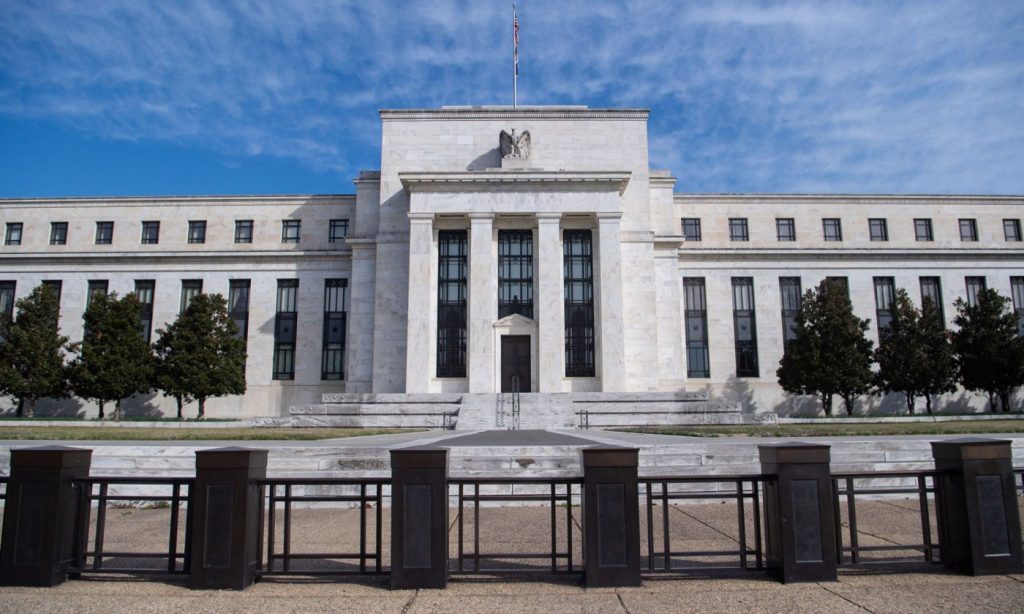Jeff Ostrowski | Bankrate.com (TNS)
Inflation is still running well above plan, and that means the Federal Reserve is keeping its finger firmly on the pause button. The central bank raised rates 11 times in 2022 and 2023, with the expectation that it would reverse course this year. But as inflation has stayed above 3%, it is standing pat. Following the Fed’s June 12 meeting, its fourth gathering of the year, Chairman Jerome Powell held steady again, announcing no change in interest rates. The Fed also signaled that it’s likely to cut rates only once this year, down from its previous estimate of three cuts.
“Mortgage rates, which have remained higher for longer, will likely remain in the high 6s until later this year,” says Lisa Sturtevant, chief economist at Bright MLS, a large listing service in the mid-Atlantic region. “Some homebuyers who have been sidelined by affordability challenges are going to wait until rates come down to buy. Increasingly, home sellers may have to do more negotiating to attract offers.”
The Federal Reserve and the housing market
Earlier in the inflationary cycle, the Fed had enacted increases of as much as three-quarters of a point. Now that inflation is down to 3.3% — still higher than its official target of 2%, but not terribly far off — that round of tightening appears to be over. However, until inflation drops down closer to that target, housing economists wonder when the anticipated rate cuts will begin.
“We still look for mortgage rates to drop to about 6.5% by the end of 2024,” says Mike Fratantoni, chief economist at the Mortgage Bankers Association.
In an effort to rein in inflation, the Fed boosted interest rates aggressively in 2022 and 2023, including a single jump of three-quarters of a percentage point. The hikes aimed to cool an economy that was on fire after rebounding from the coronavirus recession of 2020. That dramatic recovery has included a red-hot housing market characterized by record-high home prices and microscopic levels of inventory.
The Fed’s rate hikes have slowed the housing market. Home sales have dropped sharply. But home prices remain near record levels. Because home values are not driven solely by interest rates but by a complicated mix of factors, it’s hard to predict exactly how the Fed’s efforts will affect the housing market.
Higher rates are challenging for both homebuyers, who have to cope with steeper monthly payments, and sellers, who experience less demand and lower offers for their homes. After hitting 8% last fall, mortgage rates have dipped back down a bit. As of June 12, the average 30-year rate stood at 7.10%, according to Bankrate’s national survey of lenders.
How the Fed affects mortgage rates
The Federal Reserve does not set mortgage rates, and the central bank’s decisions don’t move mortgages as directly as they do other products, such as savings accounts and CD rates. Instead, mortgage rates tend to move in lockstep with 10-year Treasury yields.
Still, the Fed’s policies do set the overall tone for mortgage rates. Lenders and investors closely watch the central bank, and the mortgage market’s attempts to interpret the Fed’s actions affect how much you pay for your home loan. The Fed bumped rates seven times in 2022, a year that saw mortgage rates jump from 3.4% in January all the way to 7.12% in October. In 2023, mortgage rates went higher still, briefly touching 8%.
“Such increases diminish purchase affordability, making it even harder for lower-income and first-time buyers to purchase a home,” says Clare Losey, an economist with the Austin Board of Realtors in Texas.
What happens to the housing market if interest rates rise?
There’s no doubt that record-low mortgage rates helped fuel the housing boom of 2020 and 2021. Some think it was the single most important factor in pushing the residential real estate market into overdrive.
Related Articles
Are tiny homes a cost-effective solution for homelessness? This Bay Area nonprofit thinks so
These Bay Area cities are now so expensive they’re considered ‘impossibly unaffordable’
San Jose apartment complex is bought as Bay Area real estate wobbles
Photos: Infamous California cult settlement ‘Xanadu’ lists for $4.8 million
California pushes insurers to cover more homes. Is your ZIP included?
When mortgage rates surged higher than they had been in two decades, the housing market slowed dramatically. And, while sales volume remains slow, prices are high. The nationwide median existing-home price for April was $407,600, according to the National Association of Realtors — up 5.7% year-over-year and perilously close to NAR’s all-time-high median price of $413,800.
In the long term, home prices and home sales tend to be resilient to rising mortgage rates, housing economists say. That’s because individual life events that prompt a home purchase — the birth of a child, marriage, a job change — don’t always correspond conveniently with mortgage rate cycles.
History bears this out. In the 1980s, mortgage rates soared as high as 18%, yet Americans still bought homes. In the 1990s, rates of 8% to 9% were common, and Americans continued snapping up homes. During the housing bubble of 2004 to 2007, mortgage rates were high, yet prices soared.
So the current slowdown may be more of an overheated market’s return to normalcy rather than the signal of an incipient housing crash. “The combination of elevated mortgage rates and steep home-price growth over the past few years has greatly reduced affordability,” Fratantoni says.
But if mortgage rates pull back, affordability will become less of a factor. For instance, borrowing $320,000 at the mid-June rate of 7.10% translates to a monthly principal-and-interest payment of $2,151, according to Bankrate’s mortgage calculator. Borrowing the same amount at 8% translates to a monthly payment of $2,348. That’s a difference of nearly $200 per month.
A continued decline in mortgage rates could create a new challenge, though: It will likely draw new buyers into the market, a surge that could further intensify the ongoing shortage of homes for sale.
Next steps for borrowers
Here are some pro tips for dealing with elevated mortgage rates:
—Shop around for a mortgage: Savvy shopping can help you find a better-than-average rate. With the refinance boom considerably slowed, lenders are eager for your business. “Conducting an online search can save thousands of dollars by finding lenders offering a lower rate and more competitive fees,” says Greg McBride, Bankrate’s chief financial analyst.
—Be cautious about ARMs: Adjustable-rate mortgages may look tempting, but McBride says borrowers should steer clear. “Don’t fall into the trap of using an adjustable-rate mortgage as a crutch of affordability,” he says. “There is little in the way of upfront savings, an average of just one-half percentage point for the first five years, but the risk of higher rates in future years looms large. New adjustable mortgage products are structured to change every six months rather than every 12 months, which had previously been the norm.”
—Consider a home equity loan or HELOC: While mortgage refinancing is on the wane, many homeowners are turning to home equity lines of credit (HELOCs) to tap into their home equity. The rationale is simple: If you need $50,000 for a kitchen renovation and you have a mortgage for $300,000 at 3%, you probably don’t want to take out a new loan at 7%. Better to keep the 3% rate on the mortgage and take a HELOC — even if it costs 10%.
(Visit Bankrate online at bankrate.com.)
©2024 Bankrate.com. Distributed by Tribune Content Agency, LLC.


